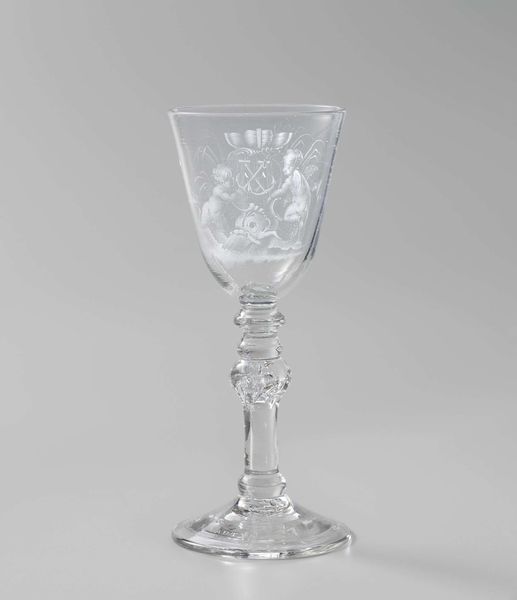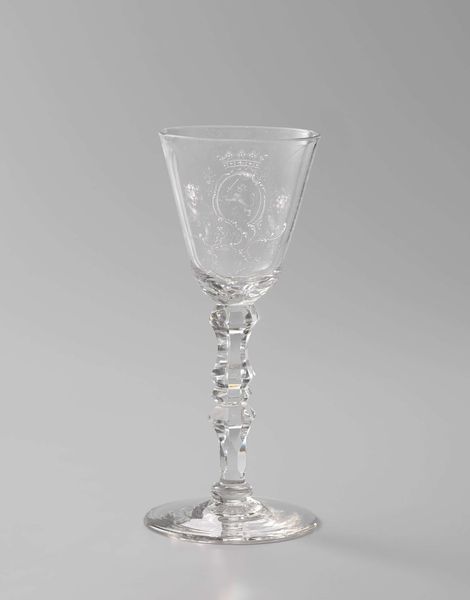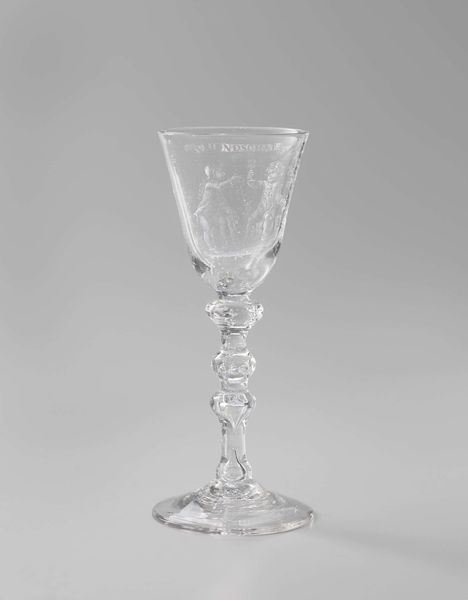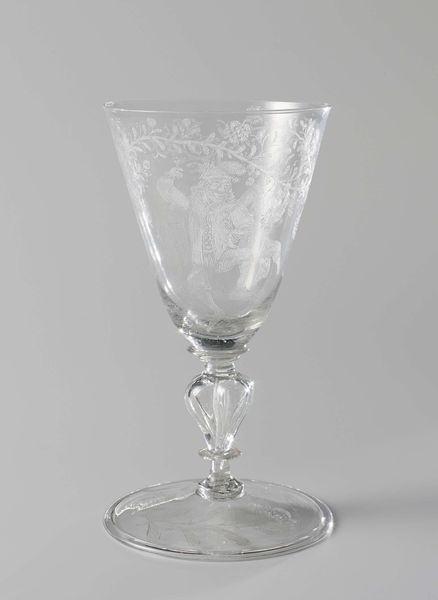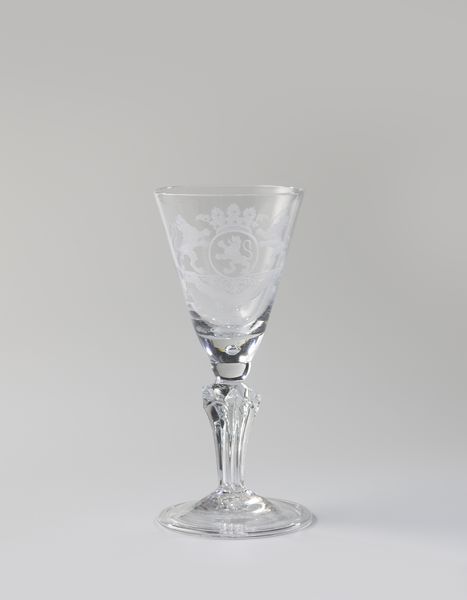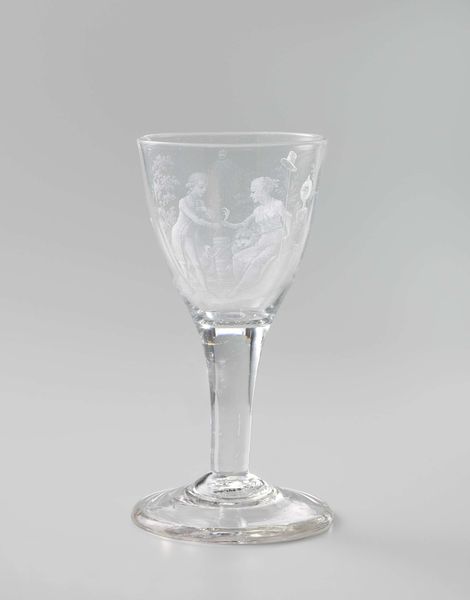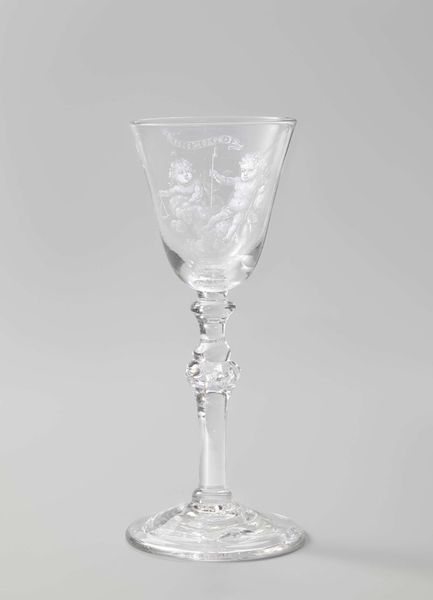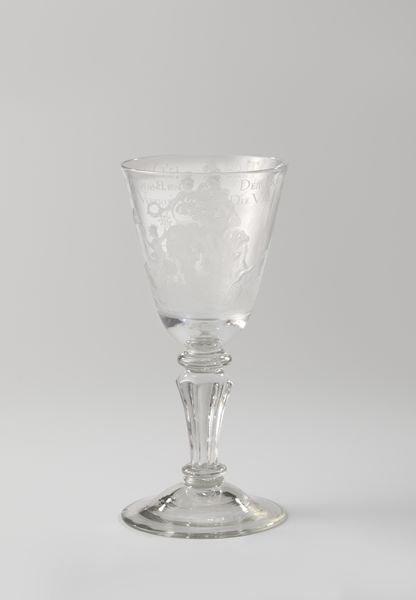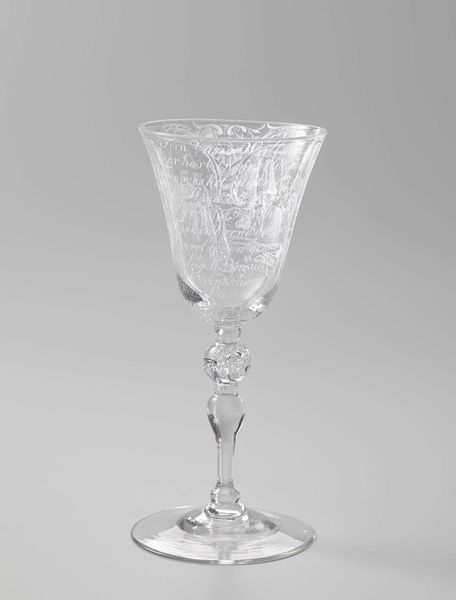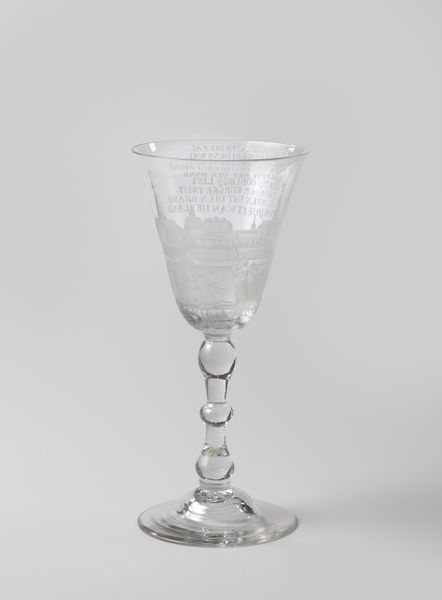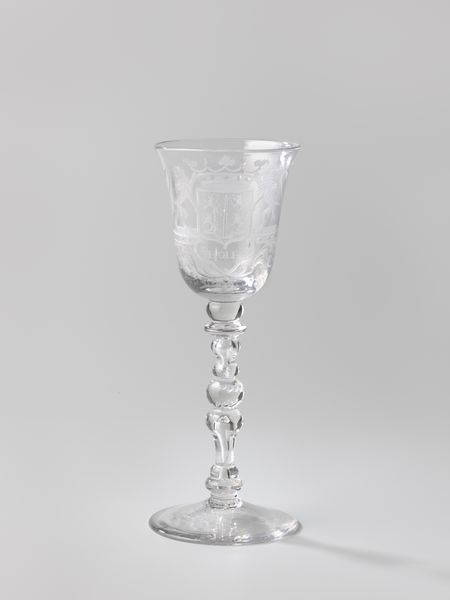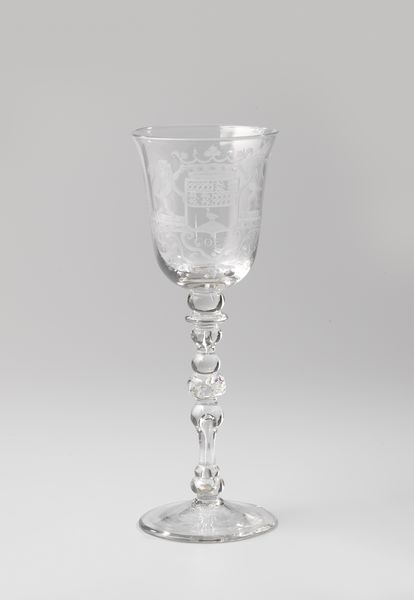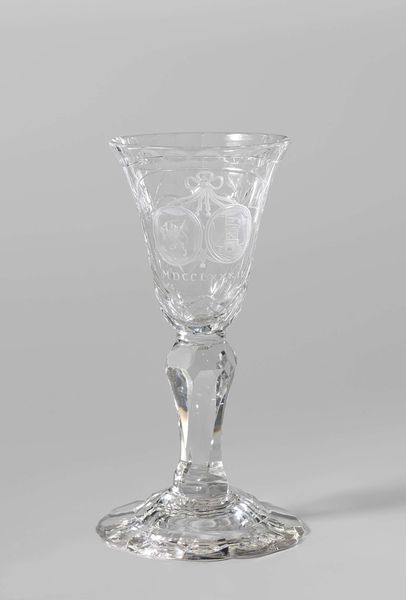
glass, engraving
#
portrait
#
baroque
#
glass
#
ceramic
#
history-painting
#
decorative-art
#
engraving
Dimensions: height 18.5 cm, diameter 8.2 cm, diameter 8.8 cm
Copyright: Rijks Museum: Open Domain
Editor: We’re looking at a wine glass crafted after 1690. It’s adorned with a portrait of King William III. I’m struck by the fragility of the piece. How would you interpret its artistic choices? Curator: Its elegance lies precisely in the manipulation of the medium. Consider the delicate engraving on the glass. It’s not merely representational; it's a study in line and form. The portrait itself, positioned high on the glass, creates a visual hierarchy. What is the impact of seeing it through the glass, and how does the distortion play with our perception of power and authority? Editor: It’s like seeing a ghost of the king… fractured and fleeting. Is the stem deliberately designed with facets to refract light? It creates a dazzling effect. Curator: Precisely. The baroque aesthetic embraces ornamentation and dynamism. Notice how the light dances across the surface. How do you see the interplay between the functional object and its artistic embellishments? Editor: It’s not just a wine glass, it's a political statement, rendered ephemeral. Did the artist prioritize decoration over usability? Curator: The utility is subservient to the ideological statement. But there’s also visual tension. The delicacy of the glass is juxtaposed against the regal authority depicted on its surface. And the translucency. It is not meant to last forever; this tension evokes transience, doesn't it? Editor: Yes! This detailed formal analysis revealed more depth than expected. Thanks! Curator: And to me. Examining the glass together brings a renewed perspective on form, material and purpose.
Comments
rijksmuseum about 2 years ago
⋮
In 1689 Stadtholder William III was crowned King of England. On this glass, he is shown wearing the English royal crown. The inscription reads: ‘William Rex’ (King William).
Join the conversation
Join millions of artists and users on Artera today and experience the ultimate creative platform.
